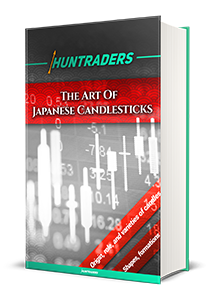Course Summary
The art of Japanese Candlesticks

Unlock the full potential of candlesticks for your investments.
With the right knowledge and understanding, observing candlesticks can greatly aid in making informed decisions when opening and closing positions in the stock exchange.
This comprehensive lecture explores the origins, role, and illustration of candlesticks, including different illustration techniques such as the Heikin-Ashi and CandlePower. With 88 candlestick formations categorized and presented with their most important attributes and criteria for recognition, you will be equipped with the tools necessary to identify each pattern in real-life situations.
Each example of a candlestick formation is based on real market data, making this presentation a valuable resource for anyone looking to use candlesticks to their advantage. With a total of 160 informative slides, you will gain a complete understanding of how to use candlesticks for your investments and maximize your profits.
Number of Lessons: 9
Munehisa Homma was one of the most successful rice traders in the 18th century in Japan. What was his secret? He was able to continuously monitor the price changes, the behaviour and reaction of other traders. This made him develop his own trading system, establishing the basics of the Japanese Candlestick illustration.
The advantage of the candles is that a single candlestick illustrates the price change of the whole day. Today, it is one of the basic tools of technical analysis.
There are two types of candlestick illustrations. Usually the following information is shown: opening, closing, minimum, maximum prices, and the opening price relative to the previous day’s closing price. These illustration techniques are described in detail in this lesson.
The Heikin-Ashi illustration is applicable on volatile markets with trend. The lesson shows the trading signals of this technique with examples.
The CandlePower shows the volume along with the 4 types of information illustrated on traditional candles. The price breakouts are easier to recognise with this technique.
Specific price changes within a day result specific candles with different meanings. The lesson helps the reader to recognise and understand the meaning of these candlesticks.
The formations can be categorised based on different criteria, such as reliability, role, and the expected trend. These categories are shown in this lesson.
Most formations have a trend reversal role and appears at the end of the trend. The use of trend reversal candles is described first generally, then the formations in this group are shown individually with examples.
It is less common to find formations within trends. The formations in this group are shown individually with examples.
Details
Quizzes
Lessons
Slices
Achievable Badge:

What You’ll Learn:
- What is the role of Japanese candlestick charts and how to depict them,
- Why is it important to have a deeper understanding of candlestick illustrations,
- What other exchange rate illustration techniques exist,
- How to group candlestick patterns correctly,
- How to identify the various candlestick patterns,
- How to interpret candlestick trading signals.

In this course:

11

9

9

9

3

3

3

2

2

2

1

1

1

1
Explore the E-Learning System:
Activate E-Learning


